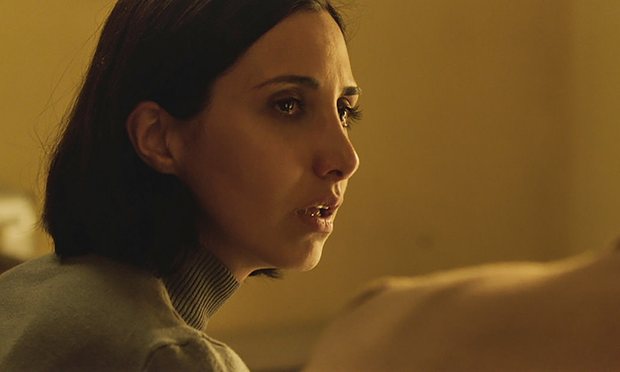Horror is a celebrated genre in Asian countries like Japan and Korea, but only recently has it begun to creep into other regions of the continent (Israeli horror is the new zeitgeist, for example). Iran has a tiny handful of horror films to its name, but in recent years, filmmakers in Iran and the diaspora have experimented more with the genre, like the artful and morose A Girl Walks Home Alone at Night, and the formally daring thriller-horror Fish and Cat. Babak Anvari’s Under the Shadow, which opens the New Directors/New Films festival on Wednesday night, is the most recent example of Iranian horror. While it’s a more straightforward haunted-house story, the setting is undeniably unique: Post-revolutionary 1980s Tehran during the Iran-Iraq war. Discouraged by the oppressive post-revolutionary education system that once supported her, protagonist Shideh (Narges Rashidi) is confined to being a housewife. Her frustrations are exasperated by the daily threats of war, and when her husband is called away for military duty, her psyche begins to unravel. Her distraught daughter Dorsa (Avin Manshadi) believes they are haunted by djinn, a kind of Middle-Eastern demon. We talked to Babak Anvari about his film’s influences and cultural specificity.
Was Under the Shadow inspired by your family’s memories of the Iran-Iraq war?
I was tapping into childhood memories, and talking to my family and friends a lot. During the missile attacks—near the end of the war in 1988—I was around the age of the child in the film. People were leaving Tehran, my family left as well. It comes from a personal place as an Iranian.
Despite there being many stories of that era, it’s not well-represented in cinema—except for the propaganda war films.
That was one of the reasons why I thought I’d never make this film in Iran, because they’re very sensitive about that era. They call it the “Sacred Defense,” and all the films made about the war are about the brave soldiers—which they were, defending the country—but at the same time, it’s a bit of a taboo to show that people were under pressure or getting exhausted. It was important for me to show what civilians were going through. Almost all Iranians were going through a hard time, some more than others. In Tehran it was almost like an invisible war. As a child, it was scary. There weren’t soldiers on the street fighting, but it was all about the sirens and the tape on the windows. Every now and then, hearing blasts in the distance. It was that atmosphere. It was creepy because you never knew what was actually happening, especially as a child. When you don’t understand what’s going on around you, you start exaggerating things in your head…
You come up with your own explanation, like djinn.
Exactly.
In Middle-Eastern culture, djinn is a generic term for demons based on mythic lore. When you watch an American horror movie about the devil, you know its origins and what it represents. Djinn is similarly well-known to you and me, but it’s novel for others.
Ultimately, as long as the audience understand it’s a malevolent supernatural entity, like demons, most of the job is done. It’s a cultural take on a very old tale.
What book does Shideh read about djinn?
It’s called People of the Air, by a very famous and well-respected pre-revolutionary Iranian author, Gholam Hossein Saedi. He’s great. The book is anthropological, with studies of these tribes in the south of Iran who believe in djinn, which travel with the wind and possess people. However, it’s very rare—it had limited publication even before the revolution. Luckily, I managed to get my hands on it!
How did you research Shideh’s character?
The characters are more or less inspired from my family, friends, and the stories I heard, but heavily dramatized and fictionalized. The idea for the film came from a conversation I had with my mum. Like the husband character, my dad was a doctor and it was mandatory for him to serve at war for a month every year. During those times my mum was doing her best to be a protective mother but she was very anxious and scared. Because my brother and were quite timid as children and we had trouble sleeping, my mother thought that without realizing it, she’d passed along her fears to us. It was very normal for her to be afraid, and having that stress of not having her partner around.
She’s also in a culture where having a male partner was important for her safety in public spaces.
During that era, things were rapidly changing. [Shideh] is a woman living in a man’s world, constantly having to prove herself to everyone.
One of my favourite moments in Under the Shadow is when Shideh escapes the house without her head scarf and is harshly reprimanded by government officials. Djinn is scarier than the Islamic regime!
[laughs] My friend noticed that when she’s trying to get away at the end of the film and opens the garage door, she puts her head scarf on. And it falls back down. My friend thought, oh, she’s learned her lesson! This time she covers her hair. My friend is English. It’s good that some people notice that, even if they’re not Iranian.
I’d read you had trouble finding a producer who’d agree to make Under the Shadow in Farsi. I’m glad you didn’t compromise!
That was one of the biggest challenges I faced. I was very adamant. When Wigwam came on board they didn’t flinch. People asked me why I pushed for it when it’s made for an international audience. My answer is that as a filmmaker, I’m trying to create a very believable world.
You’re also re-creating a world that’s barely represented in cinema, so authenticity is paramount. How did you research the cultural nuances of 1980s Tehran?
I went through old photos from family and friends. Every little thing I was putting in the film, I’d search for it online. What did it look like? If I couldn’t find it, I’d ask my parents to find me photos. Images of tea pots, phones, cars, licence plates, clothes. By the way, Amman [Jordan] is a great place to recreate Tehran—as long as you don’t frame the palm trees!

